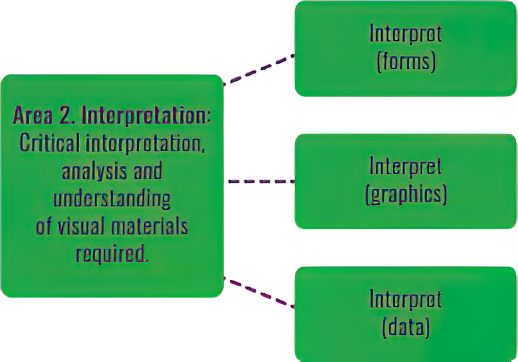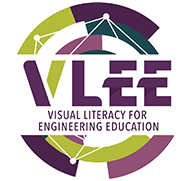-
Module 1 – What is Visual Literacy for Engineers? 9
-
Video Overview of Module 1Module1.1
-
ACTIVITY: Download Module 1’s Learning ObjectivesModule1.2
-
Why Visual Literacy is importantModule1.3
-
Case Study on Importance of Visual LiteracyModule1.4
-
The role of Visual Literacy in EngineeringModule1.5
-
Visual Literacy and CreativityModule1.6
-
Visual Literacy in EngineeringModule1.7
-
Digital technologies and Visual LiteracyModule1.8
-
Test your knowledgeQuiz1.15 questions
-
-
Module 2 – Digital Visual Tools for the effective use of images, graphics or objects for engineering tasks 5
-
Video Overview of Module 2Module2.1
-
ACTIVITY: Download Module 2’s Learning ObjectivesModule2.2
-
Using Visuals as Resources in an Engineering ContextModule2.3
-
Selecting the adequate tool for engineering tasksModule2.4
-
Test your knowledgeQuiz2.14 questions
-
-
Module 3 – Digital Visual Tools for Engineering Interpretation 7
-
Video Overview of Module 3Module3.1
-
ACTIVITY: Download Module 3’s Learning ObjectivesModule3.2
-
Interpreting Visually in an Engineering ContextModule3.3
-
Using Unity to “Interpret Forms”Module3.4
-
Using Autocad to “Interpret Graphics”Module3.5
-
Using Mathlab to “Interpret Data”Module3.6
-
Test your knowledgeQuiz3.15 questions
-
-
Module 4 – Digital Visual Tools for Engineering Analysis 12
-
Video Overview of Module 4Module4.1
-
ACTIVITY: Download Module 4’s Learning ObjectivesModule4.2
-
Visualization techniques’ role in analytical processesModule4.3
-
Basic visualization typesModule4.4
-
Main directions of visualization techniques application in scientific analysisModule4.5
-
Engineering disciplines that use various forms of visual analysisModule4.6
-
New possibilities of engineering analysis in a digital worldModule4.7
-
Data is everything, hence in a way everything can be visualizedModule4.8
-
Visual analysis of engineering data representation in visualizations of BI systemsModule4.9
-
Case Study 1Module4.10
-
Case Study 2Module4.11
-
Test your knowledgeQuiz4.15 questions
-
-
Module 5 – Digital Visual Tools for Solving Engineering problems 6
-
Video Overview of Module 5Module5.1
-
ACTIVITY: Download Module 5’s Learning ObjectivesModule5.2
-
Solving Visually in an Engineering ContextModule5.3
-
Using UML Diagramming Tool to “Visualise Solutions”Module5.4
-
Using Unity to “Explore”Module5.5
-
Test your knowledgeQuiz5.15 questions
-
-
Module 6 – Digital Visual Tools for Creating Engineering concepts and data 6
-
Video Overview of Module 6Module6.1
-
ACTIVITY: Download Module 6’s Learning ObjectivesModule6.2
-
Creating Visually in an Engineering ContextModule6.3
-
Using Coogle to “Envision”Module6.4
-
Using Autocad LT to “Create Forms”Module6.5
-
Test your knowledgeQuiz6.15 questions
-
-
Module 7 – Digital Visual Tools for Engineering Communication 6
-
Video Overview of Module 7Module7.1
-
ACTIVITY: Download Module 7’s Learning ObjectivesModule7.2
-
Communicating Visually in an Engineering ContextModule7.3
-
Using Thinklink to “SHARE”Module7.4
-
Using Draw IO to “DESCRIBE”Module7.5
-
Test your knowledgeQuiz7.15 questionsFinal
-
Interpreting Visually in an Engineering Context
Perceive and understand visual information
Visual Interpretation in an Engineering Context is about interpreting the technical meaning of visual resources, and understanding of the topic/subject through ideation and graphic expression. Interpretation involves perceiving in the form of the perception process from external sources, and then its recognition after comparing to mental representations.
Interpretation requires prior technical knowledge, knowledge of the function of the part/set and the significance of standardized symbols, dimensions and forms of representations. It also requires identifying the design intent, in order to interpret the purpose of a visual engineering representation.
Visually it can be presented in the following way.

